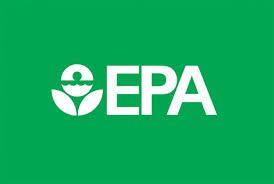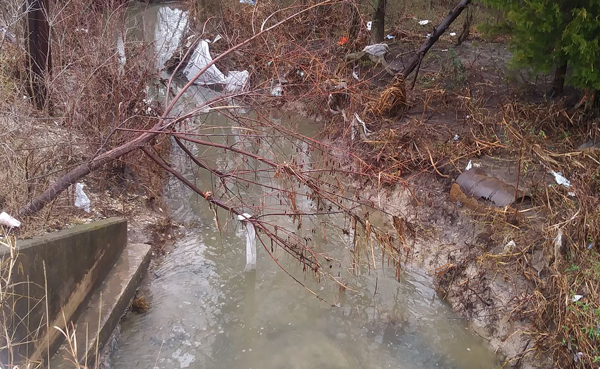As far back as 1994, residents in the Meadowlark Estates and Williams Estates neighborhoods have been concerned about the possibility of toxins and carcinogens in the area bound by Forest Lane, Shiloh Road, Garland Avenue and Miller Road. The area is adjacent to a number of industrial plants that use various toxic agents in manufacturing processes. For example, Globe Union, which was formerly at 1111 Shiloh Road, used lead in the production of batteries.
More than 20 years ago, Rhonda Mullen and Holly Sandborn began to wonder about the large number of their Meadowlark neighbors who had cancer at that time or had passed away because of cancer. Their concern grew as they visited residents and found more instances than they had suspected.
The pair collected and compiled stacks of information and presented it to the city of Garland, the Texas Commission on Environmental Quality (TCEQ) and the Environmental Protection Agency (EPA). They received no help from any of these organizations and after a while, life circumstances prevented the two from continuing their quest.
In early 2018, Don Phillips, a lifelong Garland resident who grew up in Meadowlark Estates, issued a question on Facebook. He wondered if there were others in the Meadowlark/Williams area who had a large number of cancer diagnoses in their families. His father had been diagnosed with cancer in the late 1990s and again in the early 2000s. His daughter had been diagnosed with brain cancer.
Within a few hours, Phillips had hundreds of responses from people who currently live or had grown up in the area. Most had unusual occurrences of cancer and neurological, nervous system and immune disorders. There was also a large incidence of Alzheimer’s in respondents’ families.
One of the people who saw Phillips’ Facebook post knew about the work that had been done by Mullen and Sandborn in 1994 and contacted Mullen. She contacted Phillips and they began sharing information.
The Meadowlark/Williams Concerned Citizens Group was formed and requests for information were sent out on Facebook. Respondents completed surveys and more than 320 were returned listing names of residents and illnesses they, or their family members, have suffered as well as other pertinent information.
Data collected from the surveys is marked with teardrop symbols on this map. These responses include only people that have seen the concerned citizens’ website or heard about the situation in another way. There is no way to predict how many have been sick or passed away that never heard about the environmental hazards.
The State of Texas has performed a cancer study of the area and in some categories, it shows to be slightly above the benchmark for the State of Texas. However, the parameters are strict and the area does not qualify as a cancer cluster.
Phillips then began corresponding with the TCEQ and EPA, as well as the city of Garland. The EPA asked the group to narrow down the complaint to start. The worst problems seem to be related to lead exposure, so they asked the EPA to start there. The first focus areas are Globe Union, as it is believed by many to be the worst offender; the old Desoto paint factory (Valspar); and alternate sites, the alleyway between Kraft Foods and Cardinal Lane and the vacant field beside Hatco (formerly Resistol).
Lead is deposited into the bones and teeth and is accumulated over a long period. It can cause kidney failure/cancer, autism in children, dementia in adults, brain cancer/tumors, neurological issues and bone diseases. It is introduced into the body by respiration, ingestion from plants and absorption. Lead is distributed into surrounding areas adjacent to lead smelters and battery manufacturing facilities by airborne particles from smelting activities, spills of battery acid and other ways. It binds itself to dust, soil and water remaining where it is deposited.
According to past employees, Globe Union ran five lead smelters 24 hours a day for multiple years about 50 feet from the Meadowlark/Williams neighborhood.
In November, the citizens group met with city officials including City Manager Bryan Bradford, Mayor Lori Dodson, District 8 Council Member Robert J. Smith and employees from the city’s Environmental Health Department. At the meeting, the group asked for the city’s help to investigate the sites. They would like for the city to:
- Fund necessary environmental tests.
- Enact an ordinance requiring a production bond of any company who utilizes hazardous chemicals or products. If the company leaves the site and does not clean it by EPA standards the bond will not be returned. Instead, it will be used to clean the area.
- Place a moratorium on production, manufacturing or warehousing that utilizes any Tier 2 and above chemicals or manufactures any products that create health hazards.
At a January meeting, Council Member Smith said that he has communicated with the EPA and received a positive response. He said that folks at the EPA recognized the Meadowlark/Williams Concerned Citizens Group name and complimented the group members who have been working to gather information and find a fix.
“I live here, too and I’m a cancer survivor multiple times myself and I’ve lost family to cancer. This is no joke for me either,” Smith said. “We’re going to get this done.”
There are 23 EPA Superfund sites in Garland. Eleven of them are adjacent to Meadowlark and Williams Estates.
Congress established the Comprehensive Environmental Response, Compensation and Liability Act (CERCLA) in 1980. CERCLA is informally called Superfund. It allows EPA to clean up contaminated sites. It also forces the parties responsible for the contamination to either perform cleanups or reimburse the government for EPA-led cleanup work.
The aforementioned map shows locations of EPA Polluters, EPA Superfund sites, along with addresses of residents who have or have had cancer and their family members who have had cancer. The list of EPA polluter sites were found here.
According to the city manager, Garland will test 20 separate sites in the area. Tests will be conducted in city right of ways and perhaps in areas where permission is granted by homeowners.
Jason Chessher, the city of Garland’s director of health, said that the only circumstance under which the city would have the authority to test on private property without permission is if the city had “some pretty solid justification in terms of knowledge of environmental contamination.” He said that at this point in the Meadowlark case, there is only an allegation, which is not sufficient for the city to take action or implement restrictions on development.
If contamination is discovered, Bradford said that even though the city has no regulatory authority, the results will give the Meadowlark group more information to lobby for action from the environmental agencies.
“Right now, we are working with the neighborhood group to identify some sites and…identify the laboratory that we need to work with as well as what exactly we should be testing for,” he said. “If the tests come back showing normal levels, then hopefully that will give folks in the Meadowlark area some peace of mind.”
He added that testing will probably happen within the next three months.
A recent request for a Special Use Permit for a part of the property that the group feels could be contaminated has sparked concern as the approval of the use of the property could pose a danger to inhabitants. Bradford said that the city cannot stop an owner from selling or leasing their property.
“The city can’t tell anyone they can’t use their property,” he said. “They can’t deny a property owner the ability to sell it. And we don’t know if there is a problem or not. And we aren’t the ones that regulate that [contamination issues].”
According to the citizens group, the TCEQ has agreed to do air quality testing in the area and that will begin within the next couple of weeks.
“The goal must be to ensure the safety of the area for future generations,” Phillips said. “If it is polluted, it has to be cleaned up.”



